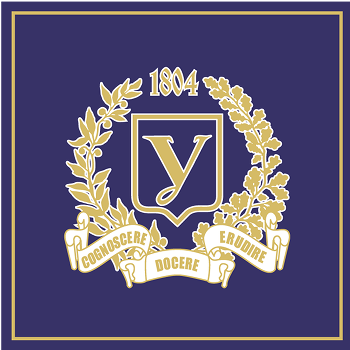биоразнообразие
- 2019-32
Agriculture Specialization as the Driving Force for Evolutional Transformation of Neoecology in Noocology
The specialization of agriculture, which has long been regarded as an economic category, is today gaining a new meaning - environmental content, becoming a link between human nutritional needs and the ability of natural ecosystems to address these problems.
Purpose. To substantiate the scientific need to "fit in" the specialization of agriculture in the dynamics of natural ecosystems on the complex path of their transformation into agroecosystems.
Results. The process of interaction between nature and society (movement) in planetary space-time is represent-ed as two of its main components - nature and society. One of the main causes of the environmental problem lies in the different speeds of development of nature and society. The result of this difference is necessarily "de-layed" in the geographical space. Such "prints" were found in the Kharkiv region, where the dynamics of agroe-cosystems were studied. Because the boundaries of agro-ecosystems are constructive, that is, they are constantly changing, they form their spatial entities, different from administrative boundaries. But in natural ecosystems, adaptation mechanisms are much more sophisticated, primarily because of the multilevel nature of natural communities as opposed to the monoculture practiced in agroecosystems. Adaptive agroecosystems are widely used to solve the environmental problems of modern agriculture, in which widespread consideration, full steam crop rotation, biodiversity increases, manure is completely utilized, biomethods are applied. Actually, adaptation is the search for such forms of agriculture that would meet the natural capabilities of a certain area.
Conclusions. In the course of noospherogenesis, the species "Homo Sapiens" has formed its own, no less natu-ral, ecosystem - an agroecosystem that has undergone a complex evolution. Given that agriculture is the closest in terms of material-energy relations to the natural ecosystems of the industry, the search for such forms of management (specialization) that would meet the natural capabilities of a particular area is probably the main task, the solution of which will promote a balanced use of the agro-sphere. From the point of view of the theory and methodology of environmental science, noospheric ecosystems, among which the closest to the natural ones are agroecosystems, have already been formed and can become the object of research that will bring neo-ecology known to domestic ecologists, but not generally observed.
- 2019-31
Macrozoobenthos State in Odessa Bay Coastal Waters in 2016-2017
Purpose. Study of macrozoobenthos contemporary state in Odessa Bay coastal waters in 2016-2017. Methods. Standard methods of macrozoobenthos sampling, determination, estimation of number and biomass Results. The results of macrozoobenthos biodiversity, structural characteristics and taxonomic composition in Odessa bay coastal waters have been presented. Seasonal dynamics of its number and biomass. has been studied. Assessment of marine environment quality has been performed on the metrics of macrozoobenthos. Conclusions. Altogether 121 taxa of benthic invertebrates were identified in Odessa Bay in 2016-2017. Taxonomic composition and quantitative indicators of macrozoobenthos had clear seasonal variation with maximal devel-opment of benthos in summer period. In spring of 2016, 75 taxa of macrozoobenthos were registered in samples, in summer – 82 taxa, in autumn – 60 taxa, in summer of 2017 – 62 taxa. The basis of macrozoobenthos community was formed be mollusks (Mollusca) with domination of species М. galloprovincialis, as well as representatives of Arthropoda and Annelida. Significant input into macrozoobenthos species composition was made by representatives of the following groups: Bryozoa, Nemertea and Platyhelminthes. Contribution of Porifera, Cnidaria and Phoronida to Odessa Bay benthic communities was insignificant. In 2016-2017 3 alien species were registered in Odessa Bay – bivalves Anadara kagoshimensis and Mya arenaria, as well as gastropod Rapana venosa. Out of 121 macrozoobenthos taxa 4 were listed in the Red Data Book of Ukraine and 6 – in the Black Sea Red Data Book. During the period of studies practically equal quantities of macrozoobenthos taxa were found on different substrates. In samples from loose substrates the number of taxa at different depths varied from 5 to 40 with Shannon diversity index (Н) making 1.7-2.9; on mixed substrate – from 19 to 48 species with Н = 1.3-2.8. Macrozoobenthos number and biomass varied on loose substrates from 0.070х104 to 3.227х104 ind/m2 and from 0.002 to 5.361 kg/m2 and on stony substrate – from 0.667х104 to 170х104 ind/m2 and from 0.088 to 46.811 kg/m2 respectively. Quality of marine environment estimated using AMBI and M-AMBI indices calculated for all the 26 samples was assessed as High in 4 cases, Good in 17 cases and Moderate in 5 cases out of 26. Mean values of the AMBI and M-AMBI indices for different seasons of year were as follows: first decade of June 2016 – 1.84±0.07 and 0.69±0.04 respectively; August 2016 – 1.66±0.12 and 0.84±0.05 respectively; November 2016 – 2.62±0.13 and 0.60±0.02 respectively; June 2017 – 2.72±0.11 and 0.73±0.05 respectively.
Ключові слова:
- 2019-31
Theoretical basis of the strategy of green infrastructure: international experience
The Green Infrastructure Strategy is used in different directions related to the design, protection and pro-tection of the environment. Purpose. Analyze international experience in using the concept of green infrastruc-ture, identify the main theoretical and practical approaches to assessing green infrastructure, analyze how to integrate green infrastructure strategies into territorial planning and integrate natural resources management in Europe and the world into policies. Methods. Literary search, analysis, synthesis, synthesis. Results. An analysis of scientific sources on the issue of studying the concept of green infrastructure; a review of the literature in related studies that directly or indirectly relate to the green infrastructure. It has been established that there are certain regional differences in the use of the concept of green infrastructure in Europe, America, and Asia. Direc-tions of practical research in this area depend on the goals, functions and existing elements of the green infra-structure. As a result, its methodology can be modified. The possibilities and limitations of its use in Ukraine are revealed. The green infrastructure strategy has the greatest application in Europe and the USA to provide the ecological basis for the economic development of the territory. Now it is characterized as a development inward to greater detail, and in a spatial sense - covering all large areas. Conclusions. Given the lack of implementation mechanisms in Ukraine for the concept of green infrastructure, it is advisable to integrate it into landscape-ecological planning and recommend using it at the local level with subsequent spreading over large areas.
- 2012-1-2-:17
The Regional Econetwork of Vinnitsya Region
The features of Vinnytsya region еcоnеtwork are described. The national core areas, regional centres of biotic diversity, national and regional еcоlogical corridors of Vinnytsya oblast are considered. The structure of the ecological network Vinnytsia region identified 41 key territory. Among them are three national parks kernel and 38 regional centers of biodiversity. They differ most biological and landscape diversity and generally repre-sented nature reserves.

